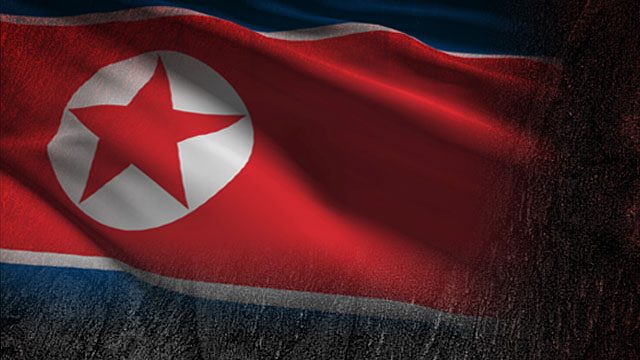SUMMARY
This is AI generated summarization, which may have errors. For context, always refer to the full article.

SEOUL, South Korea – North Korea Wednesday, January 6, said it had carried out a hydrogen bomb test after seismologists detected a tremor near its main atomic test site.
These are the key dates in North Korean history and its development of long-range missiles and nuclear weapons:
1945: Japan’s colonial rule over Korea ends with its World War II surrender.
1948: Korea is formally divided at the 38th parallel between the North, backed by the Soviet Union, and the South, supported by the United States.
1950-53: The North invades the South and war breaks out. The US intervenes on behalf of the South as part of a United Nations force, and China on the side of the North. The war leaves an estimated four million dead. Afterwards the US retains a major military presence in the South.
Late 1970s: North Korea starts working on a version of the Soviet Scud-B (range 300 km or 187 miles). Test-fired in 1984
1987-92: North begins developing variant of Scud-C (500 km), Rodong-1 (1,300 km), Taepodong-1 (2,500 km), Musudan-1 (3,000 km) and Taepodong-2 (6,700 km)
1989: US satellite pictures reveal a nuclear reprocessing plant at North Korea’s Yongbyon complex.
1994: The US comes close to war with North Korea over its removal of spent fuel rods from the Yongbyon reactor.
1994, July 8: Founding president Kim Il-Sung dies aged 82. He is succeeded by his son Kim Jong-Il.
1998, August: North Korea test-fires its first long-range ballistic missile, a Taepodong-1, over Japan as part of failed satellite launch.
1999, September: North declares moratorium on long-range missile tests amid improving ties with US
2000: North and South Korea hold their first-ever summit. A second is held in 2007.
2003: North Korea withdraws from the Nuclear Non-Proliferation Treaty.
2005: For the first time, North Korea states that it has nuclear weapons. Pyongyang also ends moratorium on long-range missile testing, blaming Bush administration’s “hostile” policy
2006, July 5: North test-fires seven missiles, including a long-range Taepodong-2 which explodes after 40 seconds, triggering UN condemnation and sanctions.
– October 9: North Korea carries out its first nuclear test, sparking international condemnation and more UN sanctions.
2007: North Korea agrees in February to scrap its nuclear facilities in return for economic aid and diplomatic benefits. In July, North Korea says it has closed down its main nuclear site.
2009, April 5: the North launches a long-range rocket and announces it will restart its Yongbyon complex despite UN condemnation.
– May 25: North Korea conducts its second underground nuclear test, sparking tougher UN sanctions.
– July 4: North test-fires seven ballistic missiles off its east coast.
2011, December 19: North Korean state media say Kim Jong-Il died two days previously of a heart attack at the age of 69, and urge people to support his son and successor Kim Jong-Un.
– February 18: Satellite images show the North has completed a launch tower at its new west coast missile base at Tongchang-ri, experts say
2012, April 13: Rocket is launched from Tongchang-ri and appears to have disintegrated soon after blastoff and fallen into the ocean, South Korean authorities say.
– December 12: North Korea launches long-range rocket, which the international community condemns as a disguised ballistic missile test.
2013, February 12: North Korea conducts third and largest nuclear test so far, drawing added UN sanctions and sending military tensions on the Korean peninsula surging for months.
– December 13: North Korea announces the execution of Kim Jong-Un’s uncle and political mentor, in a move seen by some as a sign of internal dissent.
2015, May: North Korea says it successfully test-fired a submarine-launched ballistic missile, but experts say the exercise fell far short of a full flight test.
– December 3: Satellite images indicate North Korea is excavating a new tunnel at its main nuclear test site at Punggye-ri, US think tank says.
– December 11: State media cites Kim Jong-Un as saying North Korea has developed a hydrogen bomb, but Washington says it doubts Pyongyang has a thermonuclear device.
2016, January 6: North Korea says it has detonated a hydrogen bomb.
– Rappler.com
Add a comment
How does this make you feel?
There are no comments yet. Add your comment to start the conversation.